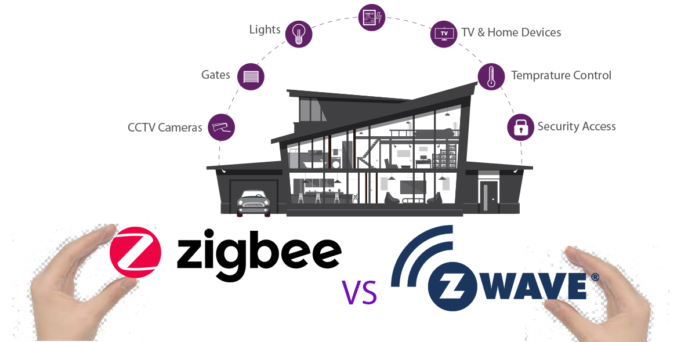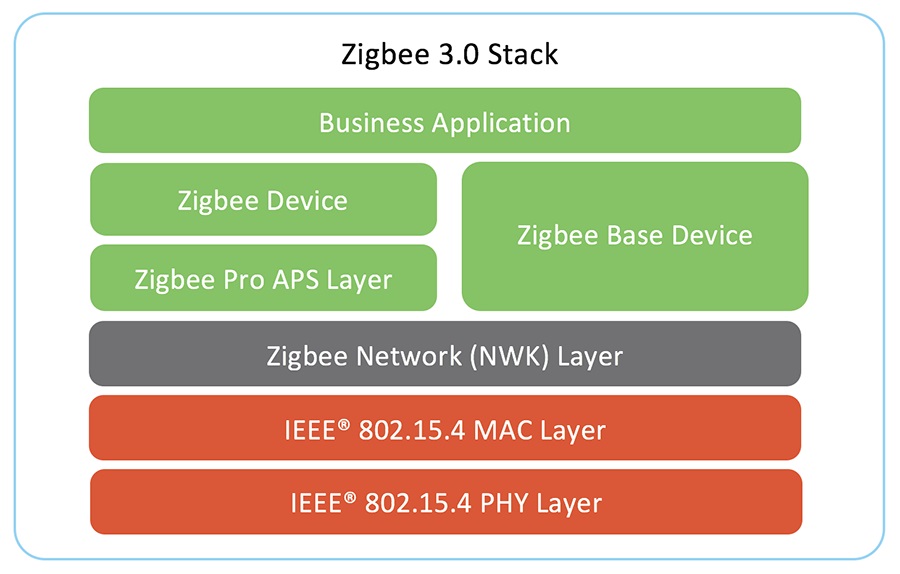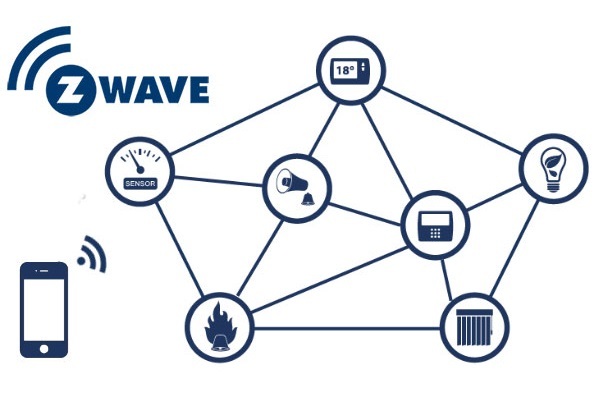Comparison Guide to Zigbee vs Z-wave Wireless Protocol

Zigbee

Zigbee is a common open standard for wireless connection between devices at close range. In plain language, it helps smart devices to connect with each other at home, like WiFi & Bluetooth. However, it is more intelligent & safer. It utilizes signal repeater (also known as booster) to extend the range, similar to Z-wave protocol. It can communicate bilaterally, meaning the devices can send and receive signals. Great energy efficiency also makes a device able to last for years on a single battery.
At first, Zigbee was originally a closed system, but it has since changed with the release of Zigbee 3.0, making all Zigbee devices compatible. Now smart device manufacturers can easily integrate this protocol into their smart ecosystem.
- High data rate – The standard can potentially carry more data, which allows more information to be sent wirelessly. This is especially useful if videos features are needed
- High connectable Device – Can connect up to thousands of devices
- Secure & energy efficient – Saves time & cost, while preventing unauthorized network intrusion
Z-wave

This is another popular open standard that is comparable to Zigbee. It is a leading standard on the market right now for home automation, with over thousands of different devices available. Like its counterpart, Z-wave is energy efficient with sufficient wireless range for use at home. It operates on a different frequency spectrum from your home WiFi, so there are no wireless interference.
Below is summary of the advantages of Z-wave protocol for smart home:
- Simple – Easy to use and deploy
- Mesh network – The devices can connect and talk to each other. This means the wireless range can be greater without the need of signal booster
- Automatic check – Feedbacks are periodically provided, for the user to check the current situation of the devices
- Interoperability – As the protocol can be used among different brands, the user do not have to be restricted to one brand only, saving potential cost.
Zigbee vs Z-wave Comparison Chart (Typical)
|
|
Z-Wave |
Zigbee |
|
Frequency |
400MHz-3GHz |
400MHz-3GHz |
|
Security |
AES-128 |
AES-128 |
|
Mesh Technology |
Unlimited |
4 hopping max |
|
2-Way Bilateral Communication |
Yes |
Yes |
|
Number of Products on Market |
2000+ |
1000+ |
|
Wireless Range |
20-30 meters |
10-20 meters |
|
Data speed |
9-100 kbps |
40-250 kbps |
|
Max Connectable Device |
~200 |
~60,000 |
With the advance of 5G technology, home automation are becoming more ubiquitous and light, doorbell, and sensors can all be monitored and controlled remotely. For any inquiry or projects, please consult with one of our specialists on how we can help you.

